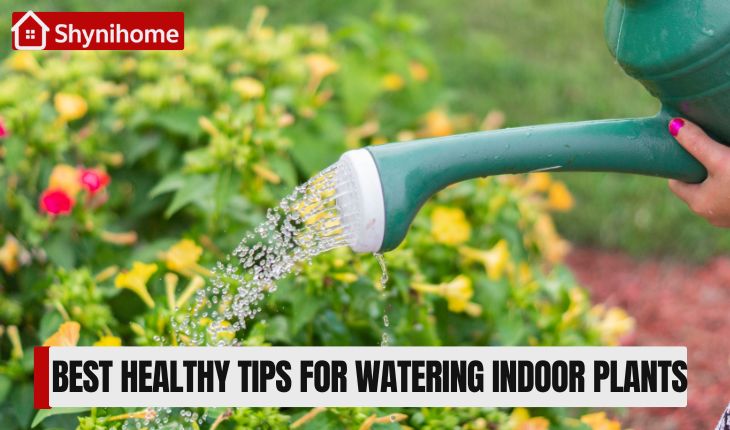
Keeping indoor plants healthy starts with one of the most basic tasks: watering. But it’s not just about pouring water when you remember. Understanding how and when to water makes all the difference.
In this article, you’ll discover practical healthy tips for watering indoor plants that will keep them thriving year-round.
Table of Contents
Toggle🌿 Why Proper Watering Matters
Overwatering is one of the most common reasons indoor plants die. On the flip side, underwatering leads to dry, lifeless plants. Learning to balance moisture is key to keeping your houseplants strong and happy.
💧Best Healthy Tips for Watering Indoor Plants

🚿 1. Know Your Plant’s Watering Needs
Each plant has its own preferences:
- Succulents & cacti: Water every 2–3 weeks
- Tropical plants (like Monstera): Once a week
- Ferns & Calatheas: Keep soil consistently moist (not soggy)
🔍 Always research your plant’s species-specific needs before creating a watering routine.
👉 Also Read: How to Start a Balcony Garden in a Small Space
👇 2. Check the Soil First
Don’t water on a fixed schedule. Use this rule instead:
- Insert your finger 1 inch into the soil.
- If it feels dry, it’s time to water.
- If it’s still moist, wait a few more days.
🧠 Tip: Use a moisture meter for precise readings.
🪴 3. Use the Right Pot & Drainage
Watering indoor plants is only effective if your pots have proper drainage holes. Water that sits in the bottom leads to root rot, which is deadly for most plants.
- Use pots with holes at the bottom
- Add pebbles or perlite to improve drainage
- Empty the saucer after watering
💦 4. Water Evenly and Slowly
Pour water slowly around the base of the plant to ensure even soaking. Avoid dumping water all at once—it can run off the top and miss the roots entirely.
☕ Use room-temperature water to avoid shocking plant roots.
☀️ 5. Consider Light and Season
More sunlight = more evaporation = more frequent watering.
- Summer: Water more often
- Winter: Water less; most plants go dormant
- Low-light rooms: Need less water
🌫️ 6. Don’t Forget Humidity
Some plants (like ferns, prayer plants, and orchids) prefer humid environments. If your air is too dry, mist your plants or use a humidifier.
🌬️ Avoid placing tropical plants near heaters or air conditioners.
🚫 Common Watering Mistakes to Avoid
- ❌ Watering on a rigid schedule
- ❌ Letting plants sit in standing water
- ❌ Using cold or chlorinated tap water
- ❌ Ignoring yellowing leaves or droopy stems
🛠️ Pro Tips to Improve Watering Routine
- Use bottom watering for plants like African violets
- Add mulch or moss on top of soil to retain moisture
- Collect rainwater or use filtered water for sensitive plants
✅ Summary: Best Practices for Watering Indoor Plants
| Tip | Why It Matters |
|---|---|
| Check soil before watering | Avoids overwatering |
| Use proper pots with drainage | Prevents root rot |
| Adjust to seasons | Meets plant’s natural rhythm |
| Use correct amount of water | Supports root health |
| Monitor humidity levels | Helps tropical plants thrive |
👉 Also Read: Beginner Urban Gardening: A Simple Guide
🌱 Final Thoughts
Mastering the art of watering indoor plants is the first step to becoming a confident indoor gardener. With a little observation and consistency, you’ll see greener leaves, stronger roots, and happier plants.
Take care of your watering game—and your plants will reward you with beauty all year long.
